-
Use Cases
-
Resources
-
Pricing
Art History Timeline
(Prehistoric Era - Present)Art history is the study of visual art forms, styles, and movements throughout history. It encompasses various periods and cultures, including ancient, medieval, Renaissance, modern, and contemporary art. Explore the timeline of Art history, from prehistoric cave paintings to contemporary art movements. More Less
Ancient Art
Construction of the Great Pyramids of Giza
2580 BCE - 2560 BCE
% complete
The construction of the Great Pyramids of Giza represents the pinnacle of ancient Egyptian architecture and engineering, showcasing the civilization's mastery of monumental construction.
Image source: Great Pyramid of Giza
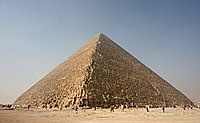
Creation of the Parthenon
447 BCE - 432 BCE
% complete
The Parthenon, a temple dedicated to the goddess Athena, stands as a symbol of classical Greek architecture and exemplifies the ideals of harmony, proportion, and balance.
Image source: Parthenon
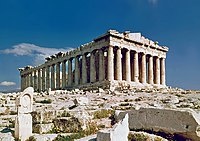
Sculpture of the Winged Victory of Samothrace
190 BCE
% complete
The Winged Victory of Samothrace, a Hellenistic sculpture, captures the dynamic movement and grace of the goddess Nike, becoming an iconic symbol of ancient Greek art.
Image source: Winged Victory of Samothrace
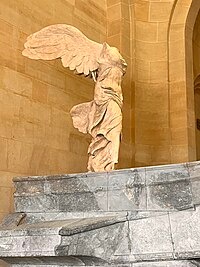
Creation of the Byzantine mosaics in the Hagia Sophia
537 CE
% complete
The Byzantine mosaics adorning the Hagia Sophia in Constantinople (now Istanbul) showcase the intricate craftsmanship and religious symbolism of Byzantine art.
Image source: Hagia Sophia

Renaissance and Baroque Art
Painting of the Mona Lisa by Leonardo da Vinci
1503 CE - 1506 CE
% complete
Leonardo da Vinci's Mona Lisa is a masterpiece of the Renaissance, renowned for its enigmatic smile and technical brilliance, representing a shift towards a more humanistic approach to portraiture.
Image source: Mona Lisa
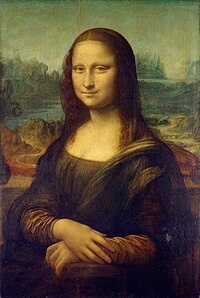
Completion of Michelangelo's ceiling frescoes in the Sistine Chapel
1508 CE - 1512 CE
% complete
Michelangelo's ceiling frescoes in the Sistine Chapel, including the iconic depiction of the Creation of Adam, showcase his mastery of anatomy and the grandeur of religious art.
Image source: Sistine Chapel ceiling
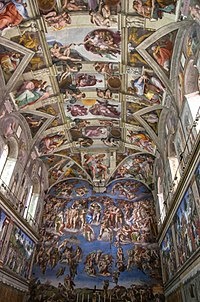
Establishment of the Royal Academy of Arts in London
1768 CE
% complete
The Royal Academy of Arts, founded by King George III, plays a crucial role in promoting and nurturing British art, fostering innovation and artistic excellence.
Image source: Royal Academy of Arts
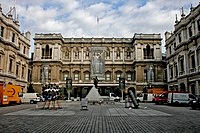
Modern and Contemporary Art
Claude Monet's "Impression, Sunrise" marks the birth of Impressionism
1874 CE
% complete
Claude Monet's "Impression, Sunrise" exhibited at the first Impressionist exhibition marks the birth of the movement, characterized by the emphasis on capturing fleeting moments and the play of light and color.
Image source: Impression, Sunrise
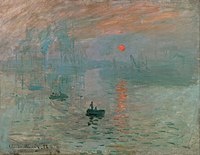
Pablo Picasso's "Les Demoiselles d'Avignon" introduces Cubism
1907 CE
% complete
Picasso's groundbreaking painting, "Les Demoiselles d'Avignon," challenges traditional notions of representation and perspective, paving the way for the development of Cubism.
Image source: Les Demoiselles d'Avignon
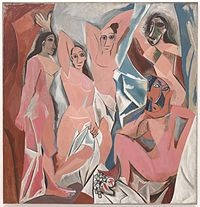
Founding of the Bauhaus school by Walter Gropius
1919 CE
% complete
The Bauhaus school, with its interdisciplinary approach and focus on the integration of art and design, revolutionizes modern art education and influences architecture, furniture design, and typography.
Image source: Bauhaus

Establishment of the Museum of Modern Art (MoMA) in New York City
1929 CE
% complete
The Museum of Modern Art (MoMA) becomes a leading institution dedicated to showcasing and preserving modern and contemporary art, playing a significant role in shaping the art world.
Image source: Museum of Modern Art
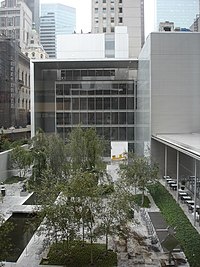
Creation of Salvador Dalí's "The Persistence of Memory"
1931 CE
% complete
Dalí's surrealist masterpiece, "The Persistence of Memory," with its melting clocks and dreamlike imagery, exemplifies the exploration of the subconscious mind and the irrational in art.
Image source: The Persistence of Memory
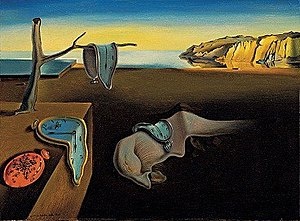
Establishment of the Black Mountain College in North Carolina
1933 CE
% complete
Black Mountain College, known for its experimental approach to education and its influence on avant-garde art, fosters interdisciplinary collaboration and launches the careers of numerous influential artists.
Image source: Black Mountain College
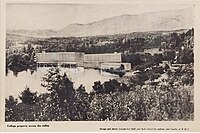
Creation of the Guernica mural by Pablo Picasso
1937 CE
% complete
Picasso's powerful anti-war mural, "Guernica," depicts the horrors of the Spanish Civil War, becoming an enduring symbol of the devastating impact of conflict on innocent civilians.
Image source: Guernica (Picasso)
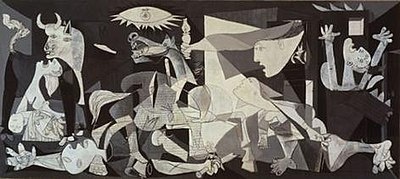
Creation of Jackson Pollock's "No. 5, 1948"
1948 CE
% complete
Pollock's abstract expressionist painting, "No. 5, 1948," showcases his unique drip painting technique, challenging traditional notions of composition and emphasizing the artist's physical engagement with the canvas.
Image source: No. 5, 1948
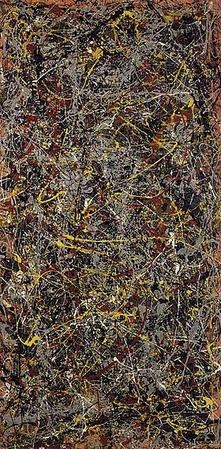
Birth of street artist Banksy's politically charged artworks
1975 - 1999
% complete
Banksy's anonymous street artworks, often addressing social and political issues, transcend traditional art spaces and challenge the notion of art as a form of protest and commentary.
Image source: Banksy

Establishment of the Tate Modern in London
2000 CE
% complete
The Tate Modern, housed in a former power station, becomes a prominent institution for contemporary art, showcasing a diverse range of international artists and engaging with contemporary issues.
Image source: Tate Modern
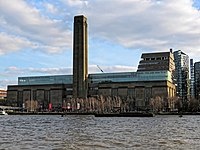
Creation of Ai Weiwei's "Sunflower Seeds" installation
2010 CE
% complete
Ai Weiwei's monumental installation, "Sunflower Seeds," consisting of millions of handcrafted porcelain seeds, explores themes of mass production, collective identity, and individuality.
Image source: Sunflower Seeds (artwork)
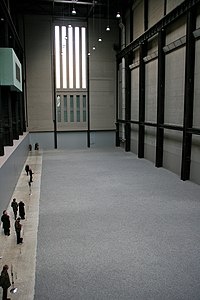
Key Facts
- Prehistoric cave paintings provide evidence of the earliest forms of artistic expression.
- The ancient Egyptians created monumental sculptures and intricate wall paintings to honor their gods and commemorate their leaders.
- The Renaissance marked a period of great artistic innovation and a revival of interest in science, literature, and philosophy.
- The Impressionist movement, led by artists such as Claude Monet and Pierre-Auguste Renoir, sought to capture the fleeting effects of light and atmosphere.
- Contemporary art encompasses a wide range of styles and mediums, including installation art, performance art, and digital art.
Source
This Art History timeline was generated with the help of AI using information found on the internet.
We strive to make these timelines as accurate as possible, but occasionally inaccurates slip in. If you notice anything amiss, let us know at [email protected] and we'll correct it for future visitors.
Create a timeline like this one for free
Preceden lets you create stunning timelines using AI or manually.
Customize your timeline with one of our low-cost paid plans
Export your timeline, add your own events, edit or remove AI-generated events, and much more
Free
$
0
free forever
No credit card required.
Basic
$
10
/month
billed annually
Cancel anytime.
Pro
$
16
/month
billed annually
Cancel anytime.
Common Questions
Can I cancel anytime?
Yes. You can cancel your subscription from your account page at anytime which will ensure you are not charged again. If you cancel you can still access your subscription for the full time period you paid for.
Will you send an annual renewal reminder?
Yes, we will email you a reminder prior to the annual renewal and will also email you a receipt.
Do you offer refunds?
Yes. You can email us within 15 days of any payment and we will issue you a full refund.
What if I have more questions?
Check out our pricing docs or send us an email anytime: [email protected].